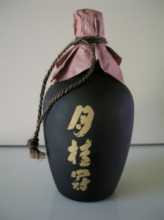I know winter has hit my hometown when my husband busts out the kettle and out sake set. Cold evenings are spent with friends around the table, talking, laughing and sometimes playing cards. They are made all the more warmer with a bit of warm sake to put a fire in the belly and loosen the tongue.
Sake is traditionally served hot or cold. In winter we naturally enjoy it hot. We received a Japanese sake set as a wedding present years ago and it has served us well. You fill the little jugs with sake and heat them in boiling water. Then you take turns serving each other little shot-sized servings of the rice wine. In summer, the jugs accompany us out to the patio where we sit sipping cool sake until long after the fireflies have gone to bed.
Selecting Sake
The higher grades of sake are best served chilled, while lower grades, similar to a table wine, are better suited as a warm drink. If you are going to be making sake bombs or another mixed drink or shot a table variety is fine. Save the good stuff for savoring on its own. Most liquor stores carry sake in a variety of bottle sizes. Unless you are having a lot of people over or planning to drink a lot, stick to the small bottles. Sake drastically declines in quality once you open the bottle.
Serving Sake
Although you can use your normal bar ware, one of the joys of enjoying sake is in the presentation. Sake is rarely poured from the bottle and is instead served from small flasks that contain enough to fill two or three cups. Small sake cups resemble ceramic shot glasses. Bowl-style and wooden cups are also available. Sake sets generally come with five cups as opposed to the four cups for most western style glassware. The reason? Shi, the word for four in Japanese, also means death so is considered bad luck.
